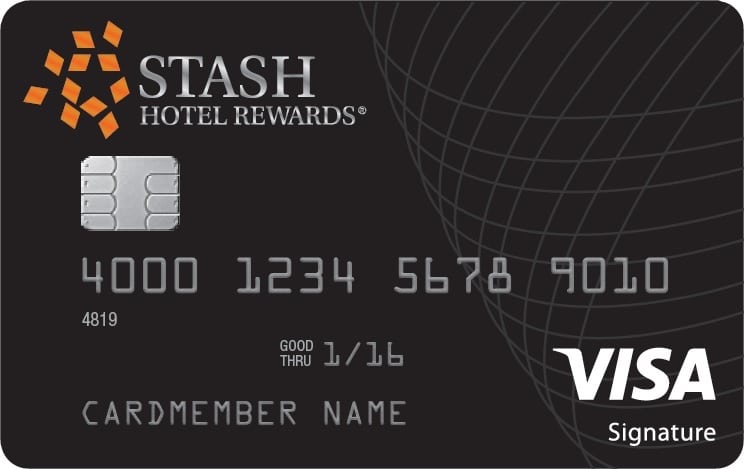Stash Rewards’ New Credit Card Wants to Disrupt Hotel Loyalty

Skift Take
Stash Hotel Rewards, a five-year-old loyalty program for independent hotels, unveiled on Tuesday its Hotel Rewards Visa Card, a hotel loyalty card that allows travelers to earn points for any hotel stay, regardless of whether it is part of the Stash Network.
Founder and CEO Jeff Low says the team encountered a climate of frustration among travelers and hoteliers, most of whom formerly worked at chain hotels, with loyalty programs that existed at brands like Marriott or Hilton.
“One of the things we heard…was you could only redeem at other Hiltons, if you earned Hilton points, for example,” Low says. “Another is that it’s similar to what you see with trying to book a flight across the country now with your miles…it’s unavailable, and that’s often the case. The other frustration is that points expire, and people feel gamed by the whole system.”
Such grievances bred fertile ground for Stash to brainstorm possible solutions and develop a model that is “more transparent and honest with [Stash] members,” Low adds.
The card, launched in association with Synchrony Financial, a provider of private label credit cards, allows cardholders to enjoy three points per dollar spent at Stash hotels in addition to the five points per dollar Stash members already get when staying at a Stash-affiliated property. Every person who is approved for the card will be given a Stash member ID during the application process. Because of that, all cardholders will earn 8 points per dollar for eligible spend on room nights at Stash Partner Hotels, Low says. Additionally, card holders are entitled to receive additional points when they hit spending thresholds within a certain amount of time.
Stays at hotels outside the Stash network, including international properties, earn travelers two points per dollar. One incentive for awarding points for stays at all non-Stash hotels stems from Stash’s lack of geographical coverage and smaller pool of properties to choose from.
“[Stash] has 170 partners in the U.S., and many of them are located on the coast, but you may have to be traveling to Tulsa. And if we don’t have a partner in Tulsa, where are you going to stay? You may end up at the Doubletree,” Low says. “If you book with the card, now you’re able to earn accelerated fast points, which gets you to that free night. Even though you’re staying at a chain, you’re earning points for the free night for the amazing independent experience.”
What’s the Incentive?
By Low’s math, the Stash card enables travelers to earn points “as fast or faster than any other program.”
“If it were on average, you have to stay about 12 to 14 nights in Stash to earn a free night. With the card, that drops to about seven nights. You’re earning a free night really fast,” Low says. “If you do the math of what Stash is worth, by our measures, you earn a free night faster with this card than any other program, including Chase Sapphire.”
However, that free night may come at a significantly higher cost than staying in room at a chain property.
Take for example The Edgewater in Seattle. Seven nights, starting from Thursday, October 15 to Thursday, October 22, in the waterfront view king bed room, the cheapest available during those dates, will cost $404.25 per night, excluding taxes and fees. Compare that with Hilton Seattle’s king bed executive floor with city view at $289 per night, exclusive of taxes and fees. Despite how fast customers may earn those points, the one free night may no longer seem like a break for your wallet given the differences in price points.
Low stresses Stash’s card as the “first hotel loyalty card of its kind” and leverages it as a freeway to scoring free nights fast as a way to entice customers. Still, the truth remains that the idea behind it, namely earning points for any hotel stay, is one that has long existed on the market.
ThePointsGuy.com editor-in-chief Zach Honig points out cards like the Chase Sapphire Preferred and Citi Prestige are two such examples of cards that award bonus points for hotel charges. Attracting a large customer base, Honig adds, will depend largely on whether a card like Stash will offer benefits that far outweigh bank cards, for example.
“Customers could be incentivized to use a credit card affiliated with a collection of independent hotels if the card offers rewards that exceed the value of points earned from a card linked to a transferable points program, such as Amex Membership Rewards or Chase’s Ultimate Rewards,” Honig says. “For example, since The Points Guy values Chase points at 2.1 cents each, and customers earn 2 points per dollar spent on travel with the Chase Sapphire Preferred card, the independent hotel card would need to award points worth more than 4.2 cents per dollar spent.”
Stash’s card awards a significant amount of points for stays its network of properties, but again, such points may come at a higher price.
While the card may not measure up to the benefits of bank cards, it may present itself as a more advantageous option compared to a co-brand card like Fairmont Visa, with its points for any hotel stay as its most attractive feature.
“Co-brand cards tend to limit bonus rewards to stays at that chain’s own properties, though many offer bonus points for other travel purchases (excluding stays at other hotel brands),” Honig says. “A co-brand card that awards bonus points for stays at a competitor’s hotel would be a welcome edition, of course, though the card issuer would be incentivizing customers to spend with a non-co-brand hotel in addition to the issuer’s partner.”




